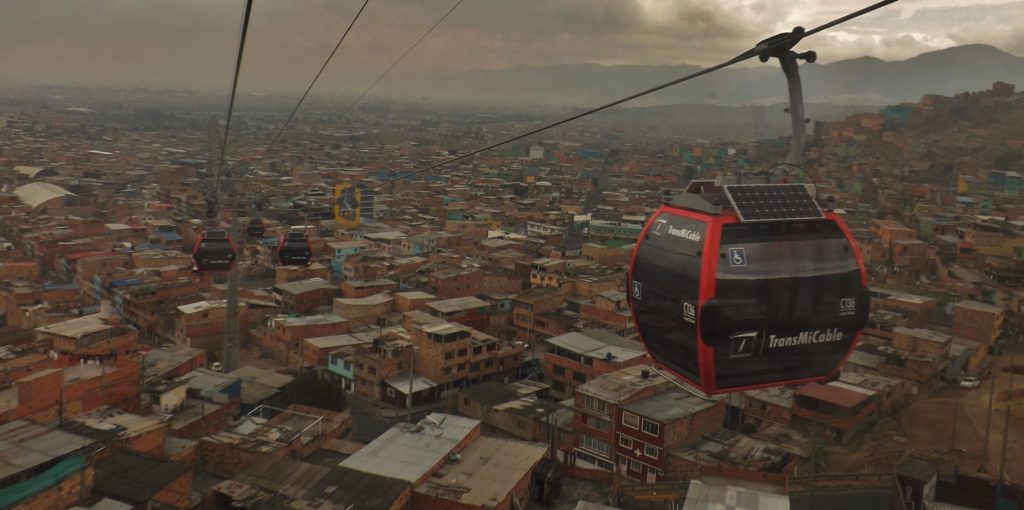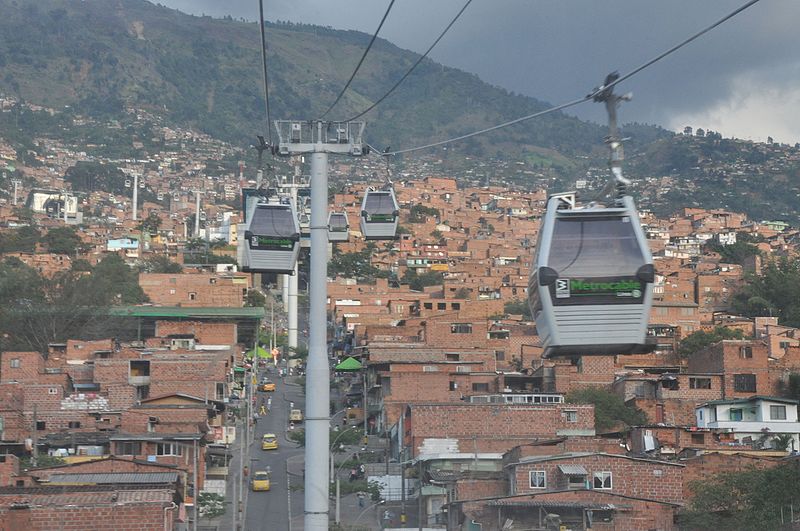
In the last few decades, Latin American cities have faced significant challenges in terms of urban mobility and equitable access to basic services. Two notable examples of innovative solutions are the Metrocable in Medellin and the TransMiCable in Bogota. These aerial transportation systems have revolutionized the way residents move around, connecting previously isolated areas and improving the quality of life in marginalized neighborhoods.
Original vision
The Medellin Metrocable, inaugurated in 2004, was a pioneer of its kind in Latin America. It emerged as a response to the lack of access of communities on the steep hills of the city to basic services and the urban center. The vision was clear: improve the mobility of inhabitants in these areas and reduce social inequalities through the integration of a modern and efficient transportation system. Subsequently, the TransMiCable in Bogota, which started operating in 2018, was inspired by the success of the Metrocable in Medellin. Focused on connecting communities on the mountain slopes surrounding the city, the TransMiCable aimed to address access and connectivity issues in some of the most disadvantaged areas of the Colombian capital.
Operation and benefits
Both systems operate similarly: cabins suspended on aerial cables transport passengers to and from the high areas of the city. These systems are faster and more efficient than traditional buses on steep and congested streets.
The Medellin Metrocable, consisting of several lines, has revolutionized the lives of over half a million people in previously marginalized neighborhoods like Santo Domingo and Parque Arvi. In addition to providing access to essential services, the Metrocable has also driven investment in these areas and improved the perception of safety.

The TransMiCable in Bogota connects the Ciudad Bolivar area with the city’s mass transit system. This system has improved access to employment and education opportunities for residents in these areas, while reducing travel times and transportation costs.
Scope and coverage
The Medellin Metrocable currently serves over 700,000 people across the city. Its lines stretch through mountain neighborhoods that were once isolated, providing residents with a fast and reliable connection to the urban center and other key locations.
The TransMiCable in Bogota has also been a success. Serving approximately 600,000 people, it has transformed the lives of entire communities in Ciudad Bolivar, providing job and education opportunities that were previously hard to access due to the mountainous topography of the area.
TransMiCable plans to build a total of 7 routes. Currently, it only has one. However, Claudia Lopez’s administration has already agreed with President Petro’s government to build 3 more routes, which will start operating in 2026: the first in San Cristobal Sur, with 3 stations; the second, in Reencuentro Monserrate, will have two new lines and a total of 8 stations.

Social impact and the future
These aerial transportation systems have shown that investment in mobility infrastructure can have a significant positive impact on people’s lives, reducing socio-economic disparities. They have led to a greater sense of belonging and connection in historically marginalized communities.
As cities continue to grow and face mobility challenges, we are likely to see more projects inspired by the success of the Metrocable and the TransMiCable. The key lesson is that innovation in transportation can go beyond conventional approaches, transforming people’s lives and promoting urban equity across the continent.
See all the latest news from Colombia and the world at ColombiaOne.com. Contact our newsroom to report an update or send your story, photos and videos. Follow Colombia One on Google News, Facebook, Instagram, and subscribe here to our newsletter.

